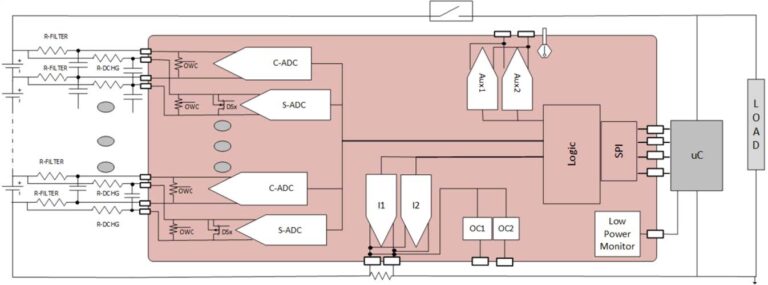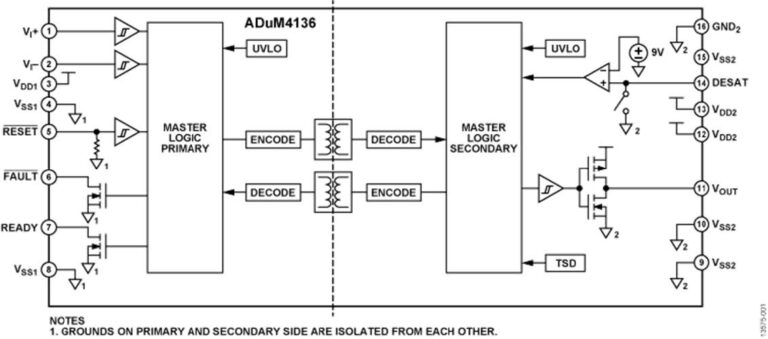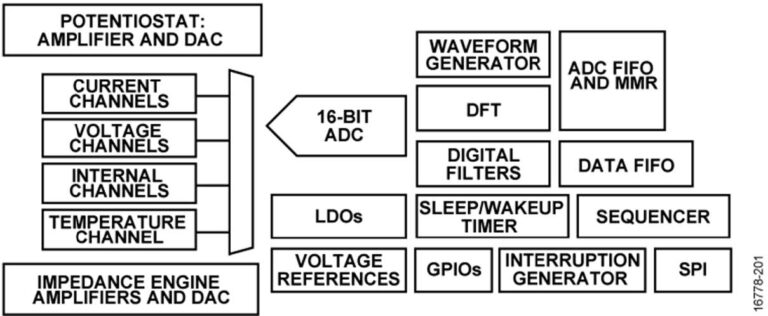
Analog Devices Inc. - Supporting the Future of Electric Vehicles
Technology and engineering must be ready to integrate the latest EV (Electric Vehicle) advancements to continue their development and adoption.

Figure 1. The number of charging stations is growing worldwide, and so is the need for advanced technology to support EVs. Image provided courtesy of Pixabay.
There are three particular areas where innovative solutions are available to support more efficient, reliable, and cost-effective EVs: battery monitoring systems, DCFC stations, and better impedance measuring approaches.
Battery Monitoring Systems
EVs often bring to mind cars and trucks, but two- and three-wheel vehicles must be addressed — especially when it comes to effective battery monitoring systems (BMS). The BMS measures current flow in and out of the battery and the battery voltage to track charge levels and performance.
The quality of the BMS directly impacts the miles per charge an EV can deliver, and it maximizes the battery’s overall lifetime and lowers the cost of ownership — making the choice of BMS critical for manufacturers. The BMS is also a crucial aspect of safety, preventing injury to drivers, passengers, and equipment.
Most two- and three-wheel EVs (and four-wheelers) use battery monitors stacked in a daisy chain configured to monitor every cell in the battery pack. Such battery monitors must be highly accurate over their lifetime and over a range of temperatures.
The ADI ADBMS6948 16-channel battery pack monitor is an excellent example of the type of BMS needed, and a typical application is shown in Figure 2. It is the only Li-ion Cell monitor with a Zero False Positive Over Current (OC) detection feature to detect short circuit events and protect the FETs, improving system reliability and cost. In addition, it uses patented technology that improves the accuracy and reliability of BMS under all operating conditions.

Figure 2. Typical 16-channel battery pack monitor application. Image provided courtesy of Analog Devices.
Also available is the EVAL-ADBMS1818 evaluation board that can monitor up to 18 series-connected battery cells with a total measurement error of less than 3 mV. Multiple devices can be connected in a daisy chain with one host processor for all devices. This daisy chain can also be operated bidirectionally, which ensures communication integrity even if a fault occurs along the communication path.
EV Fast Charging
As EV charging demands increase worldwide and consumers expect fast charging speeds, a significant challenge exists: providing consistent charging power for DCFC (Direct Current, Fast-Charging) stations.
According to experts, the charging peak power that the grid will need to provide locally to charging stations with multiple piles is more than 1 MW. And that power demand can vary intermittently throughout a typical day, with worst-case scenarios involving high charging power needs at the same time the grid is facing its highest demands.
One proposed approach to reduce dependency on the grid for DCFC stations involves implementing local power sources, such as solar and wind energy, for ESS (Energy Storage Systems). The idea is to reuse stored energy — for example, solar energy can be generated during the middle of the day when the grid faces low power demands. Later, that stored energy can be used at night to offset the additional demands made on the grid.
Combining ESS with grid power means that EVs can expect a consistent level of available power to support charging needs and fast charging speeds, not to mention the environmental benefits of reusable energy and reduced power costs.
Using ESS to support fast charging requires monitoring devices for energy storage batteries, such as the ADI LTC6813. The LTC6813-1 is a multicell battery stack monitor engineered to measure up to 18 series-connected battery cells. Its total measurement error is less than 2.2 mV and is suitable for most battery chemistries. In addition, multiple LTC6813-1 devices can be connected in series for long, high-voltage battery strings with one host processor connection.

Figure 3. ADuM4136 functional block diagram. Image provided courtesy of Analog Devices.
In addition to ESS, power conversion systems are also required to efficiently meet the needs of DCFC charging stations. Solutions from ADI include the ADuM4136 isolated gate driver with an LT3999 power supply controller for the power conversion stages designed with SiC MOSFETs. SiC MOSFETs are critical because they allow engineers to implement the required switching frequency to have the best trade-off between system design costs and efficiency compared to equivalent Si-based MOSFETs.
Electrochemical Impedance Spectroscopy
Tracking impedance is essential to support the maximum power capabilities of Lithium-ion battery systems: another example of technology needed to support the future of EVs is the ability to measure DCFC-based EV battery pack impedance. One way to do this is through electrochemical impedance spectroscopy (EIS), a non-destructive parameter measurement used to measure batteries’ dynamic behavior.
An excellent approach to implementing EIS is to provide both potentiostat and EIS functionality on a single chip as part of an impedance and electrochemical front end. A single-chip approach such as this offers several advantages, including system accuracy, size flexibility (to measure 2-Lead, 3-Lead, and 4-Lead electrochemical sensors), reduced footprint, and a longer useful life.
The ADI 5940 offers high precision, low power analog front ends (AFEs) for electrochemical-based measurement techniques, including impedance, amperometric, or voltammetric measurements, all included on a single chip. This front end also includes an
intelligent autonomous control and is AEC-Q100 qualified for automotive applications. Figure 4 illustrates its simplified block diagram.

Figure 4. Simplified block diagram of the AD5940 high precision, low power AFE. Image provided courtesy of Analog Digital.
Conclusion
The demand for EVs, including two- and three-wheel applications, is multiplying. As a result, automotive engineers find themselves pressured to find solutions to support battery monitoring, fast charging, and impedance measurement. The engineers at Analog Digital understand these needs and are supplying solutions to support these needs, including battery monitoring evaluation boards that support up to 18 series-connected battery cells, SiC-based MOSFETs to support DCFC stations with ESS, and impedance and electrochemical front ends on a single chip.
Contact us today to learn more about the EV products that Analog Digital provides.
© 2025 Excelpoint Technology Pte. Ltd. All Rights Reserved.

